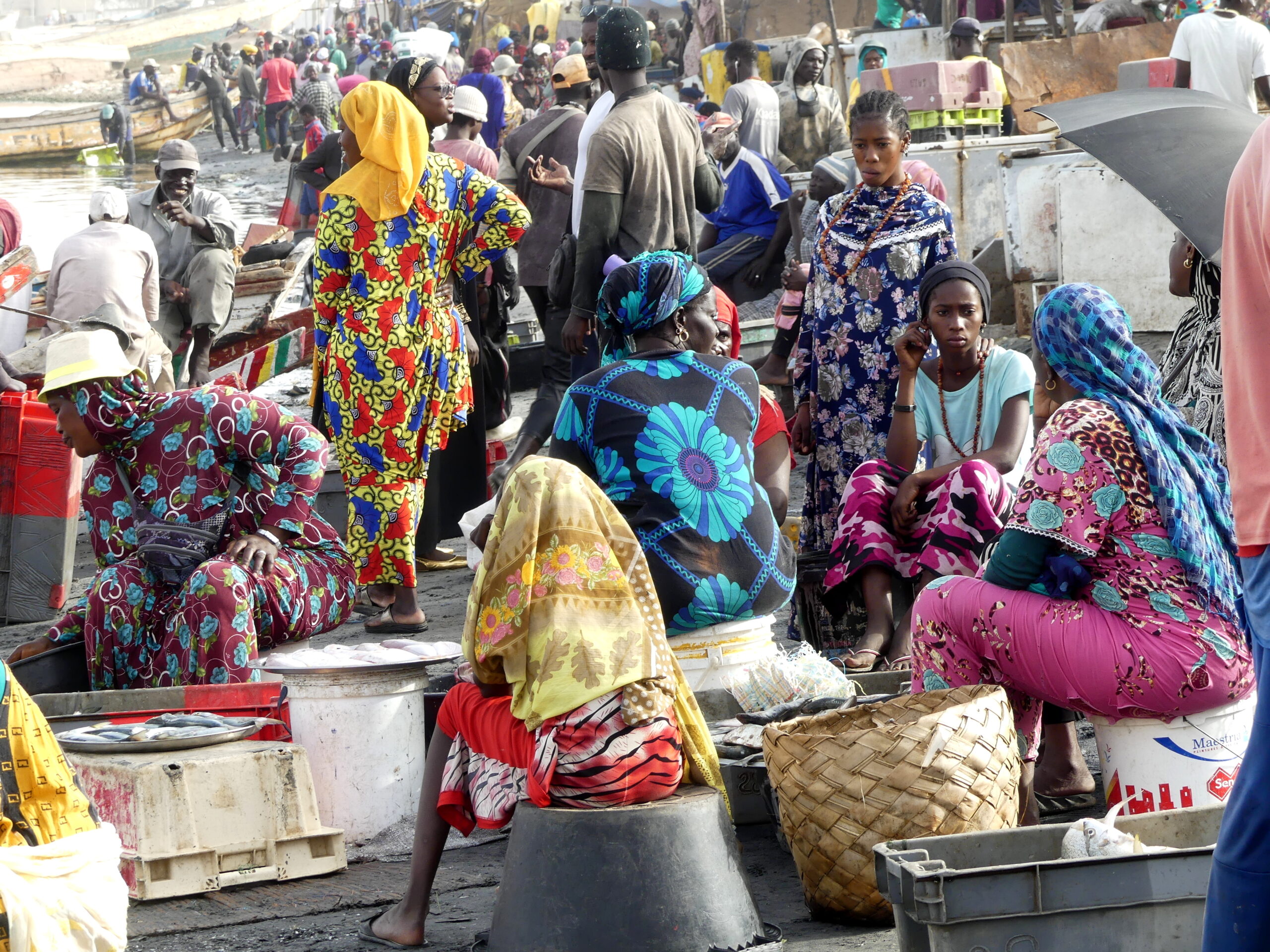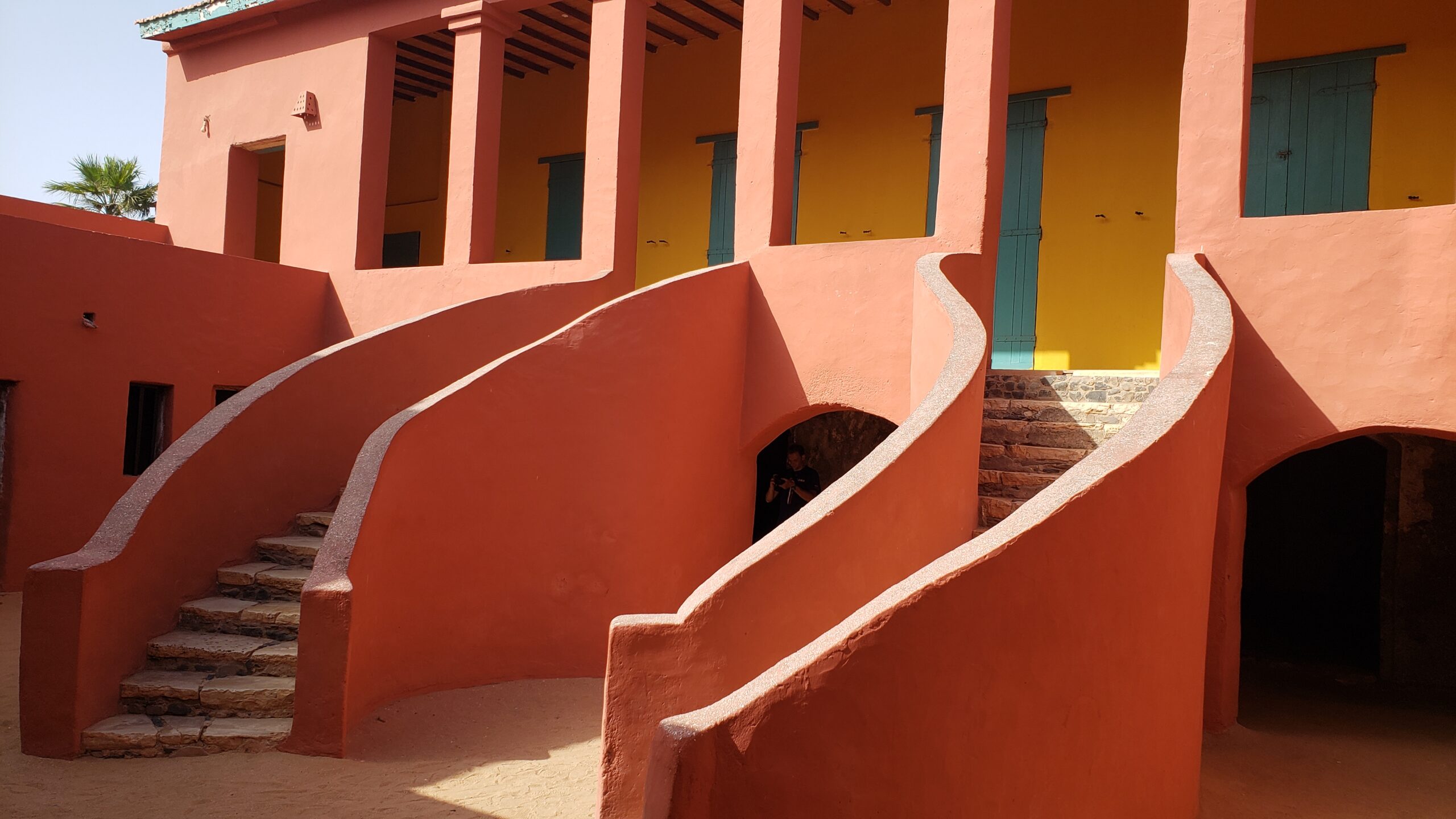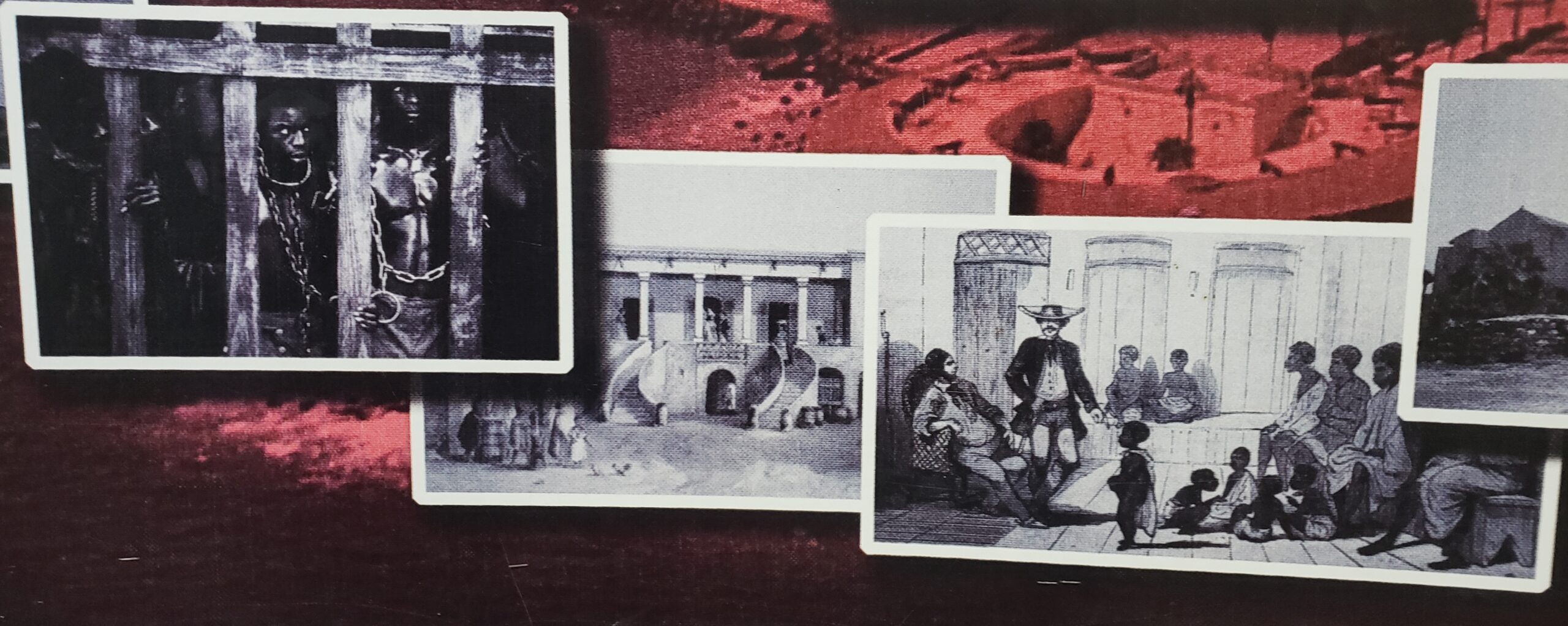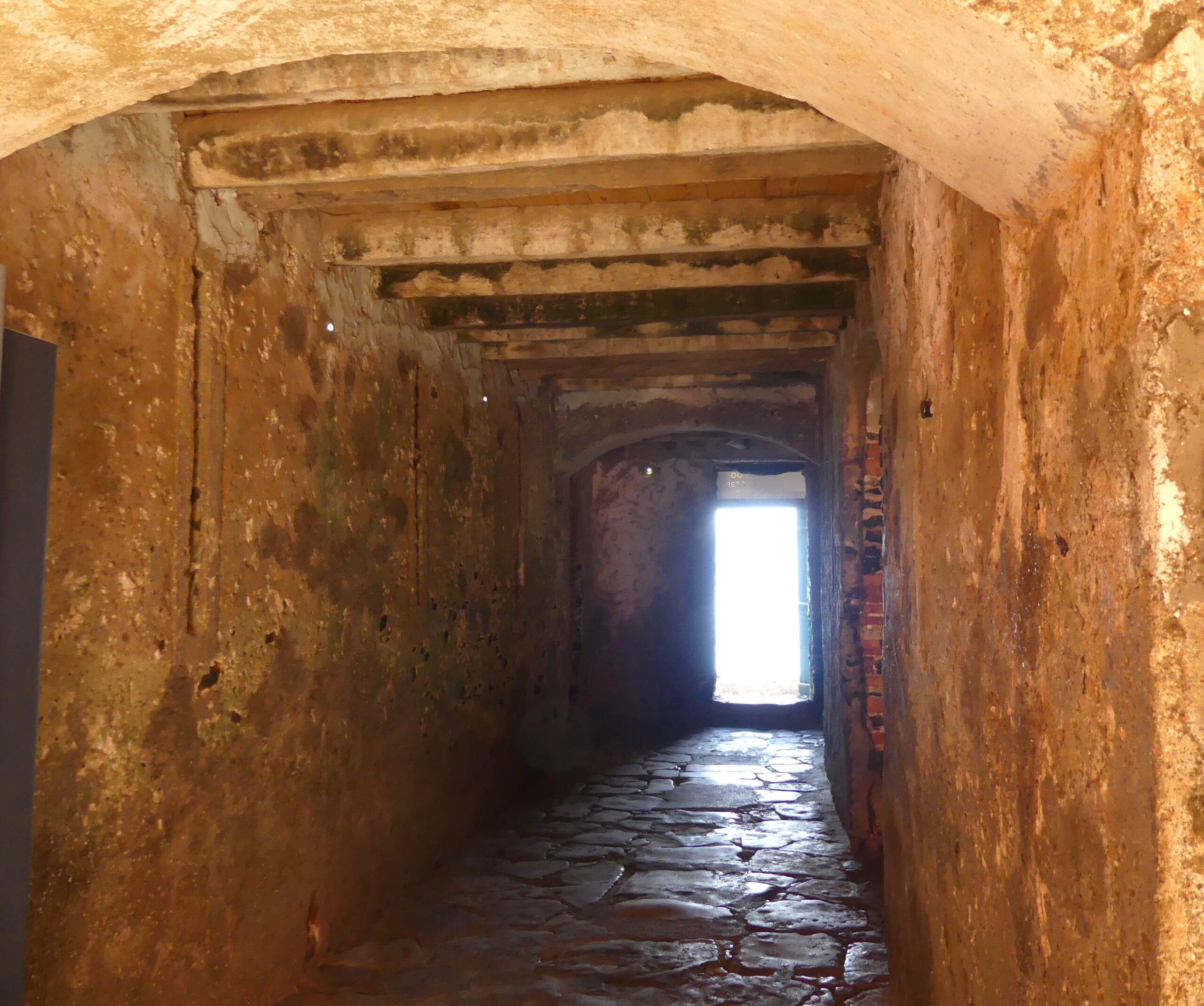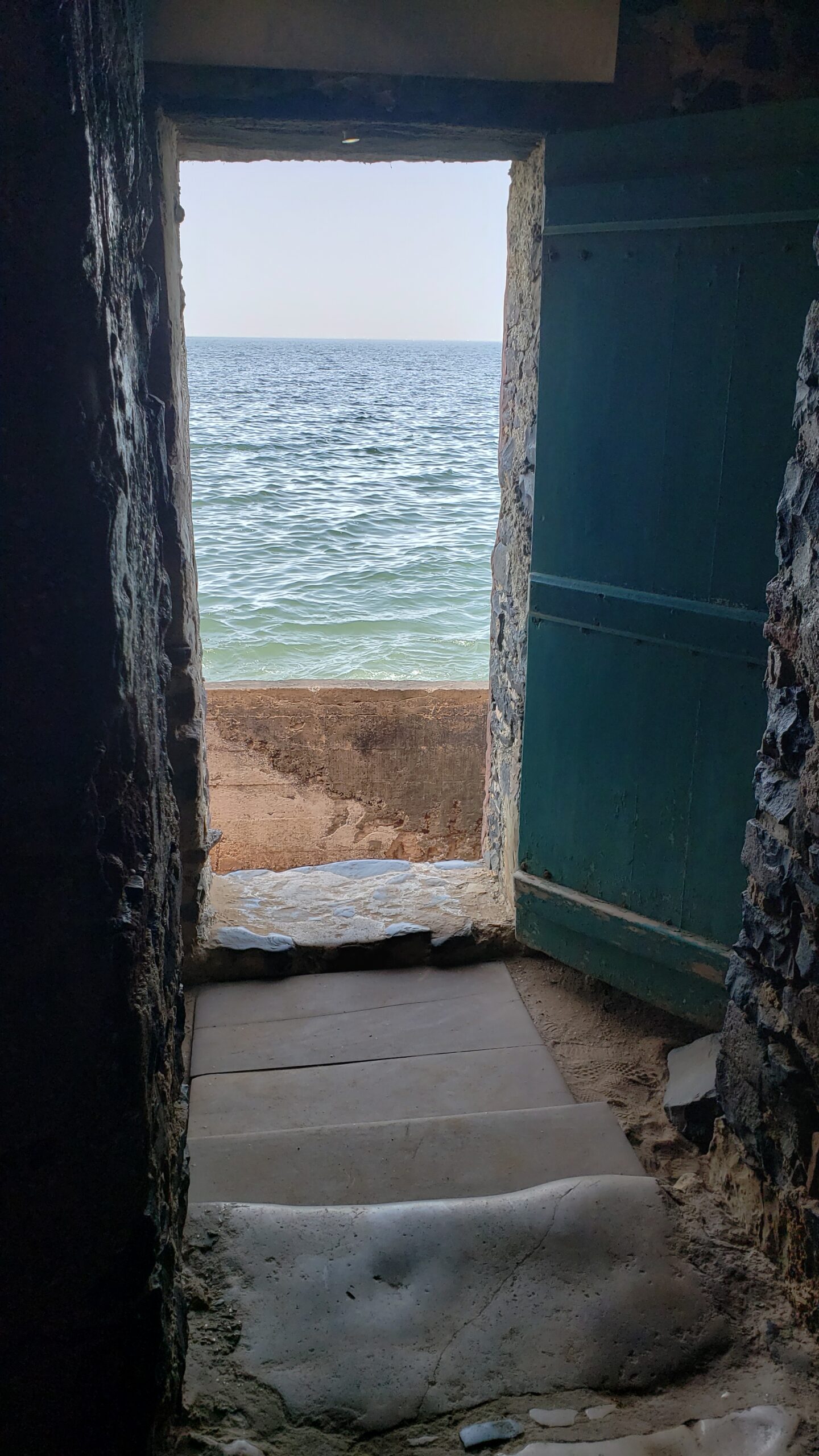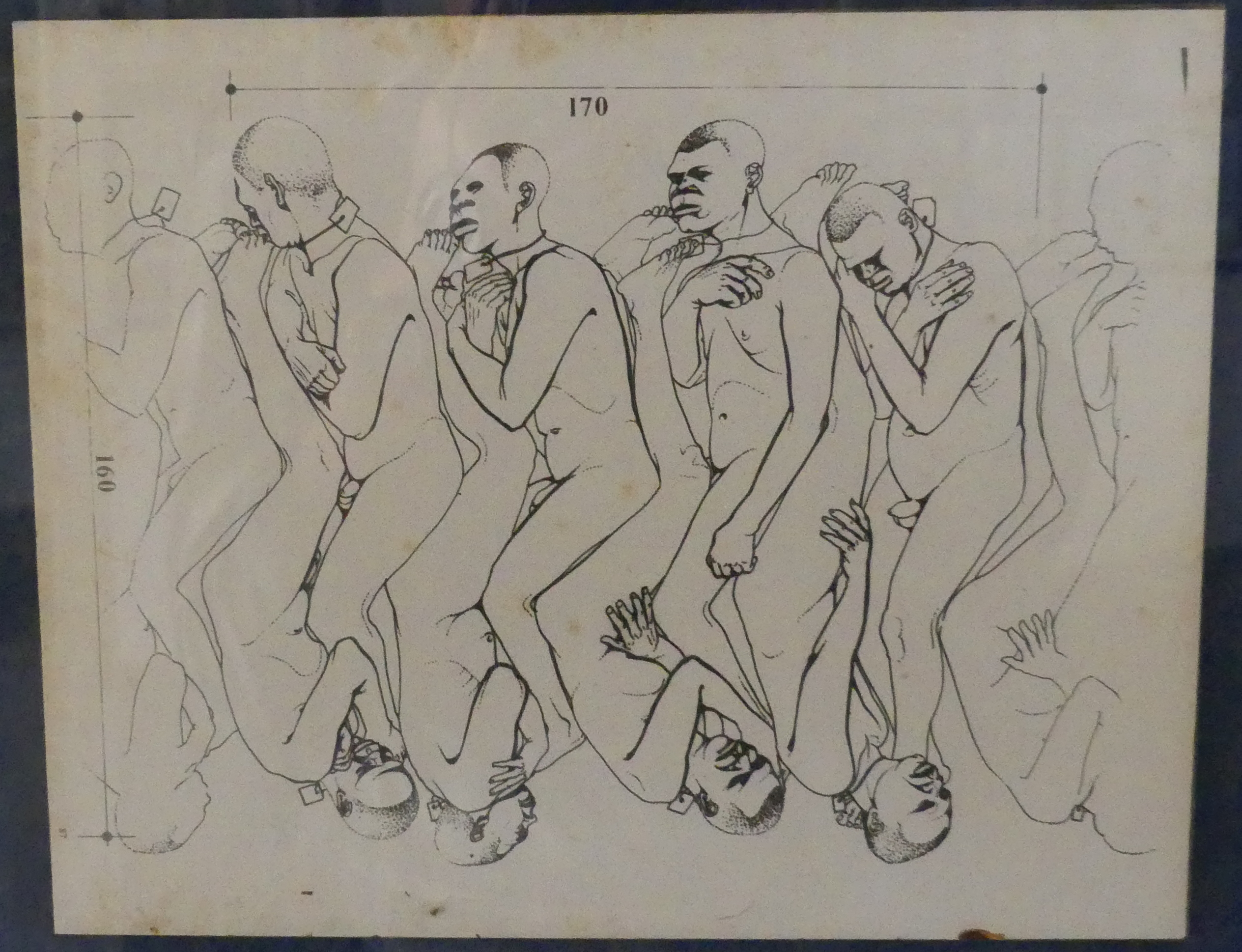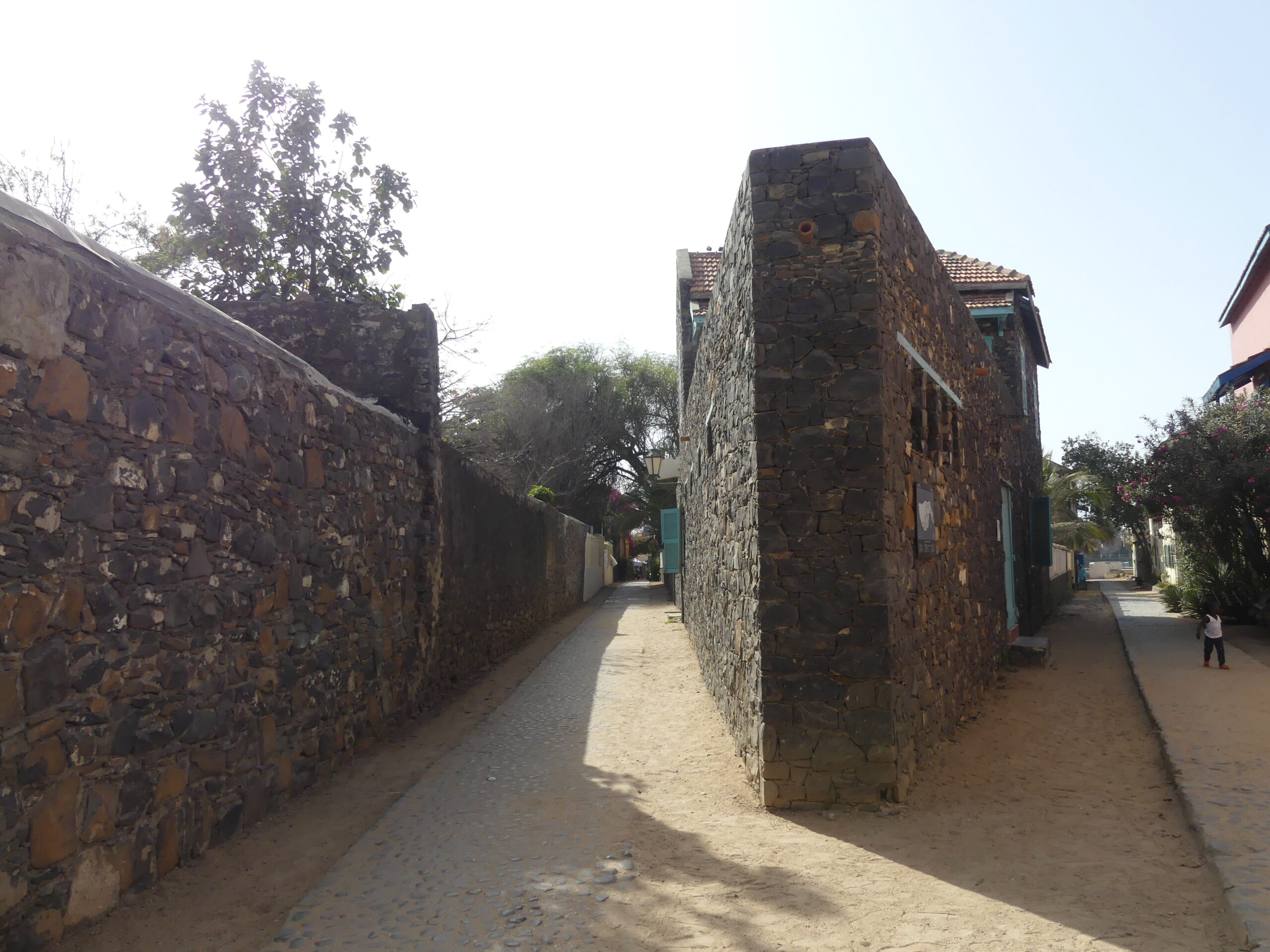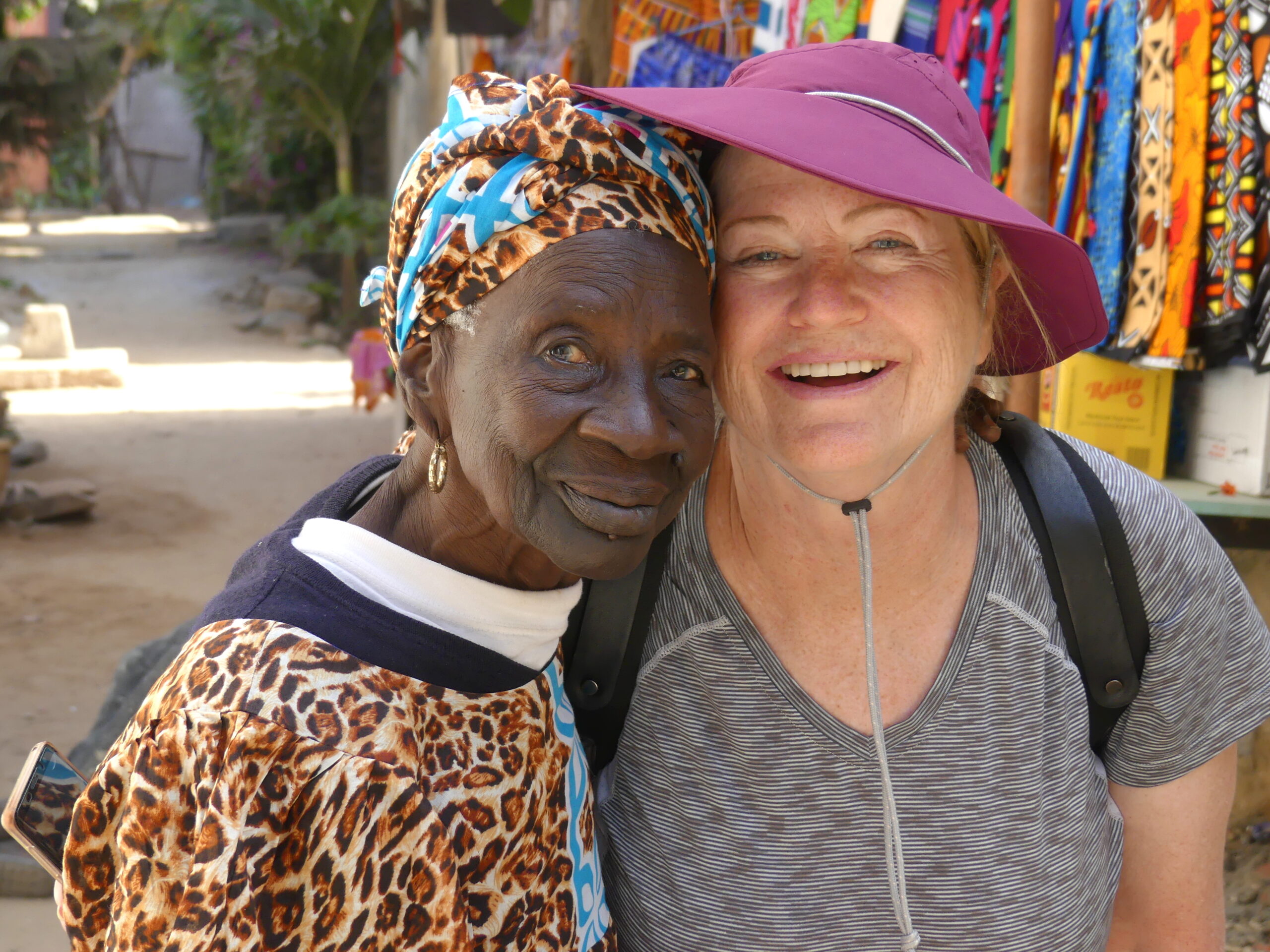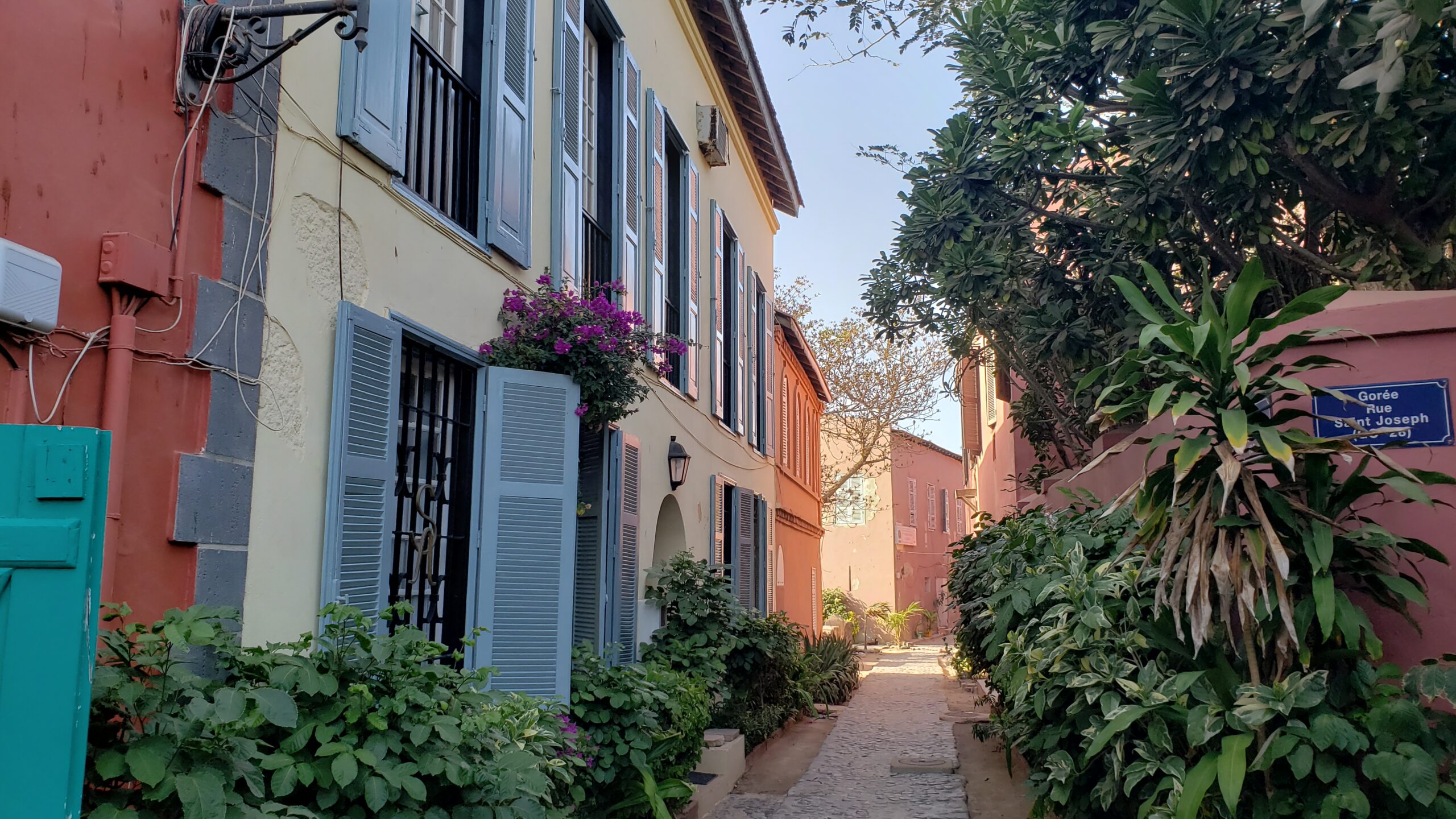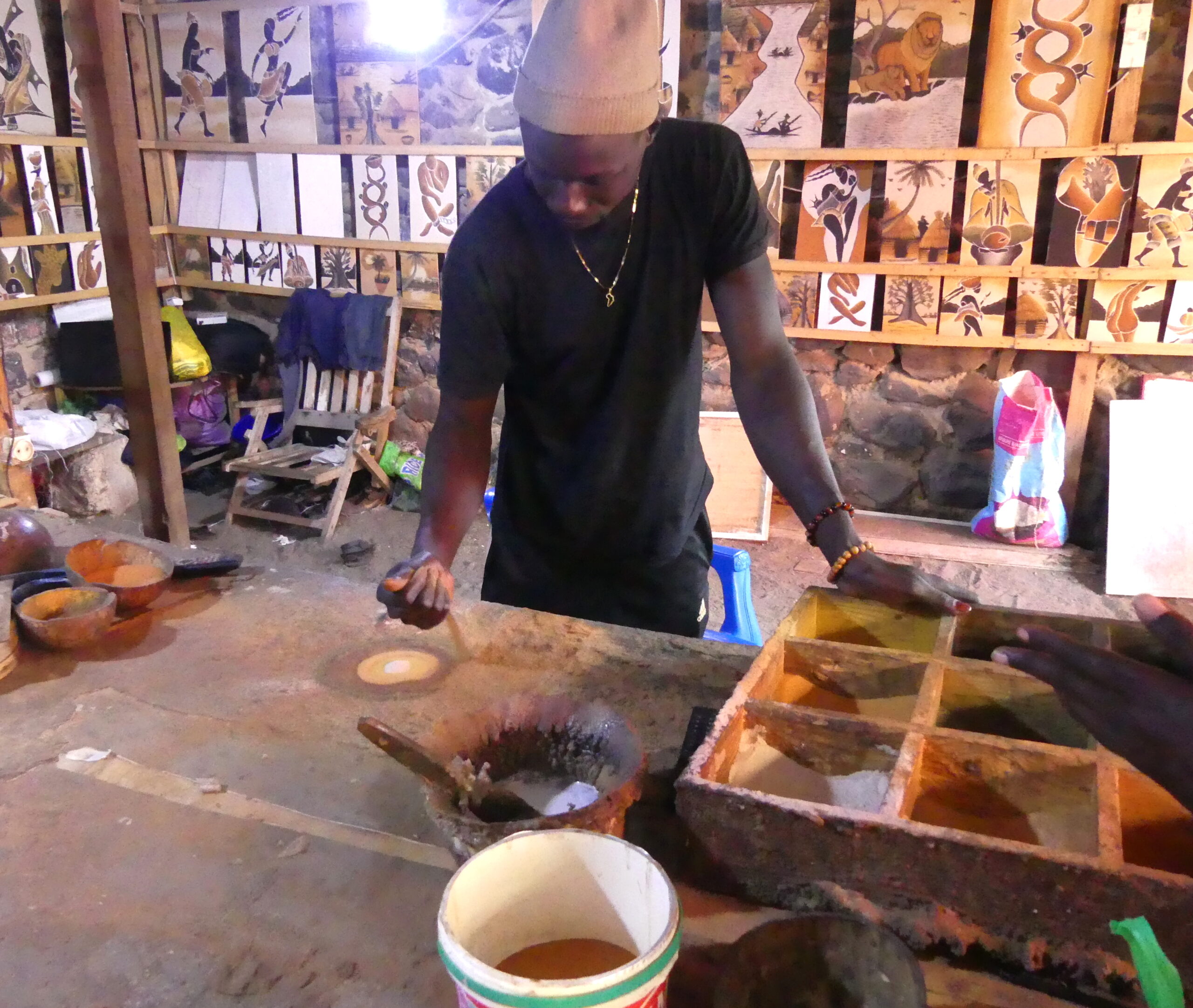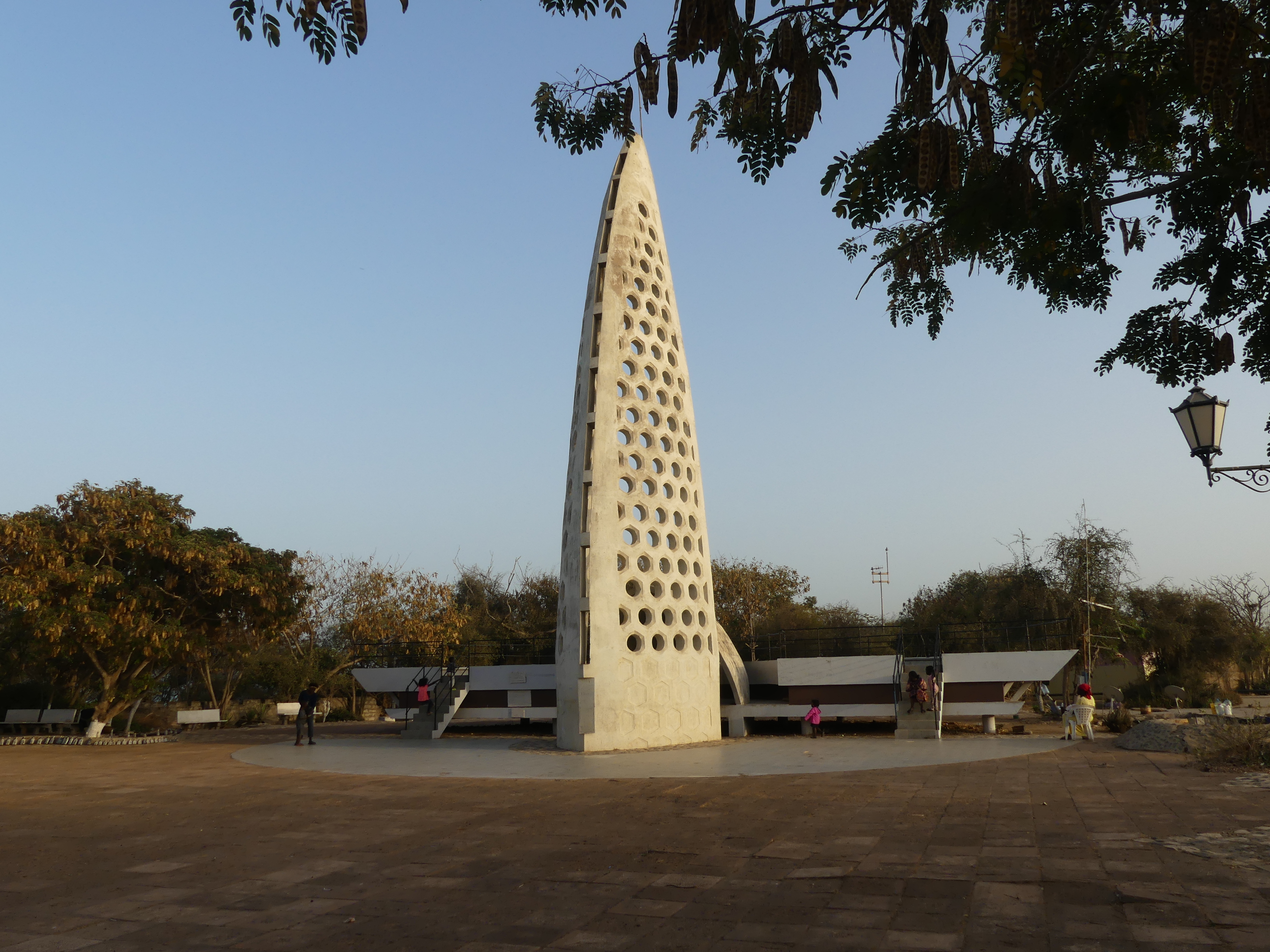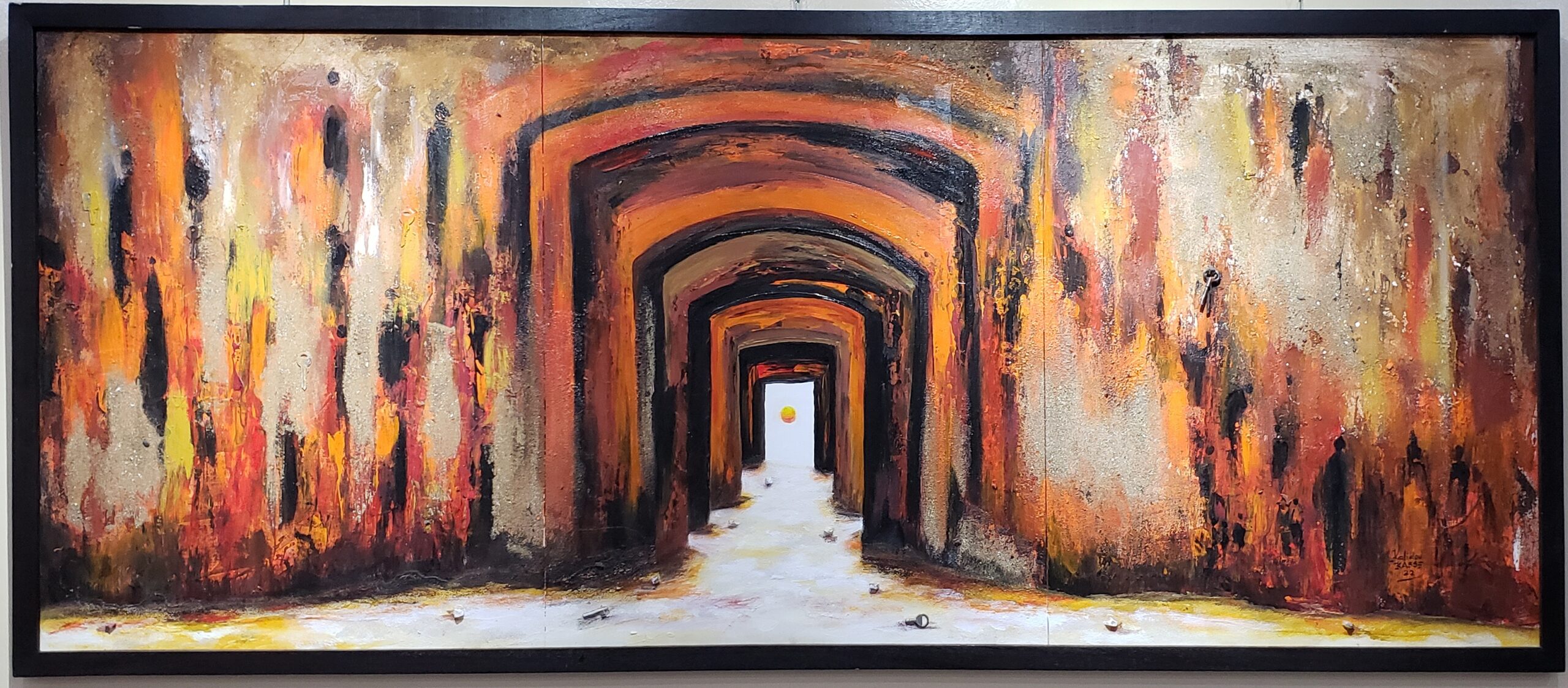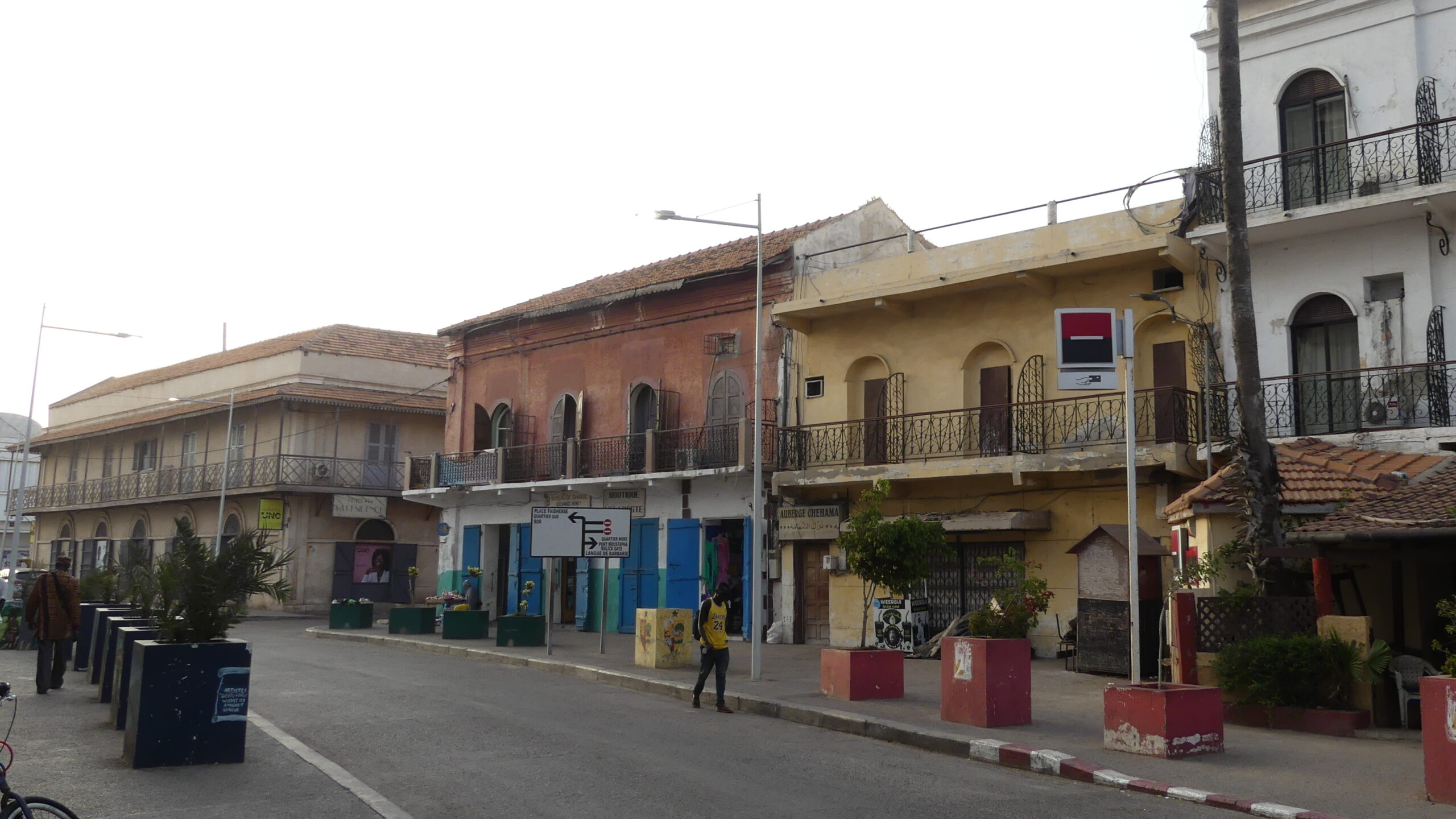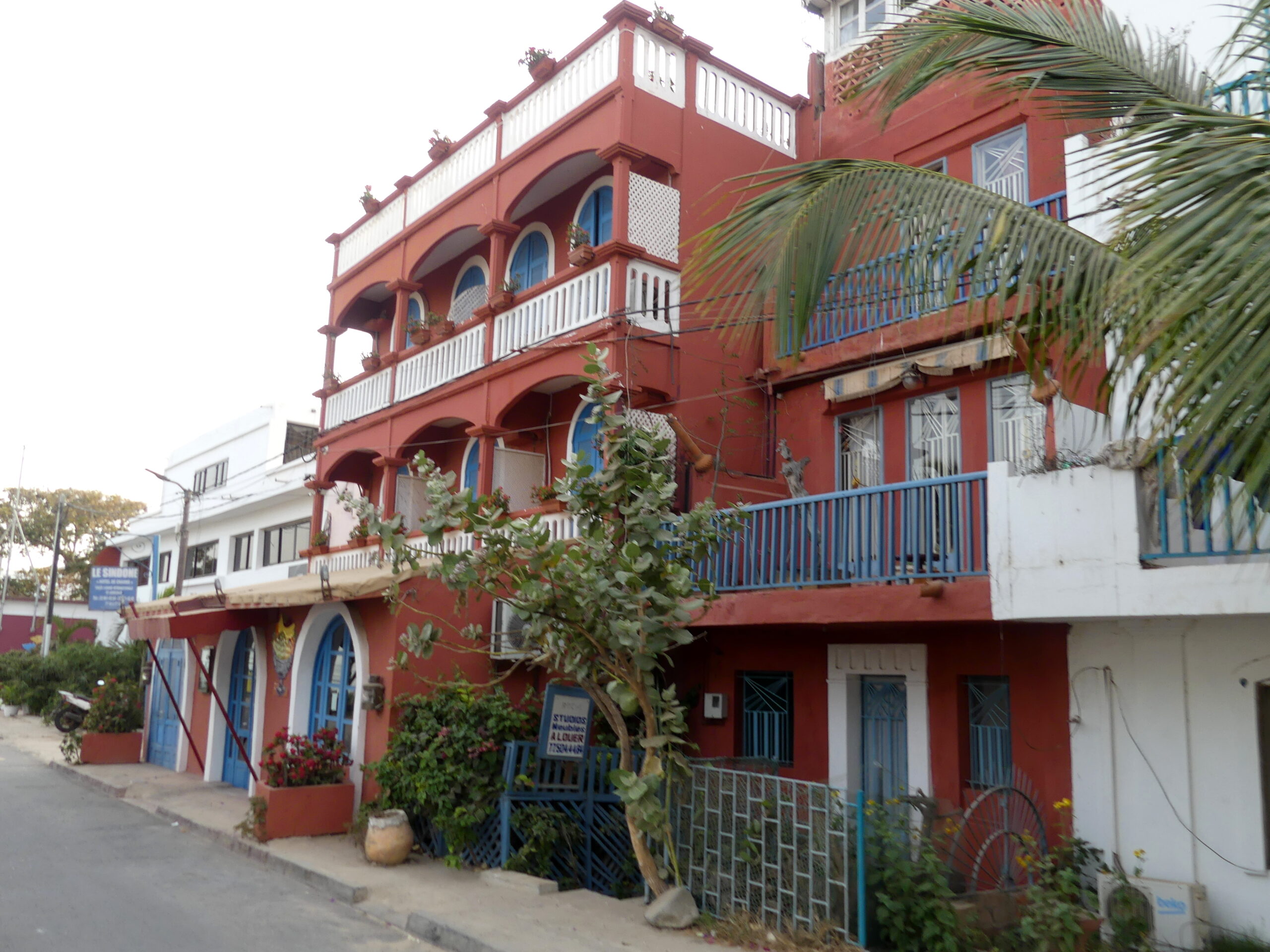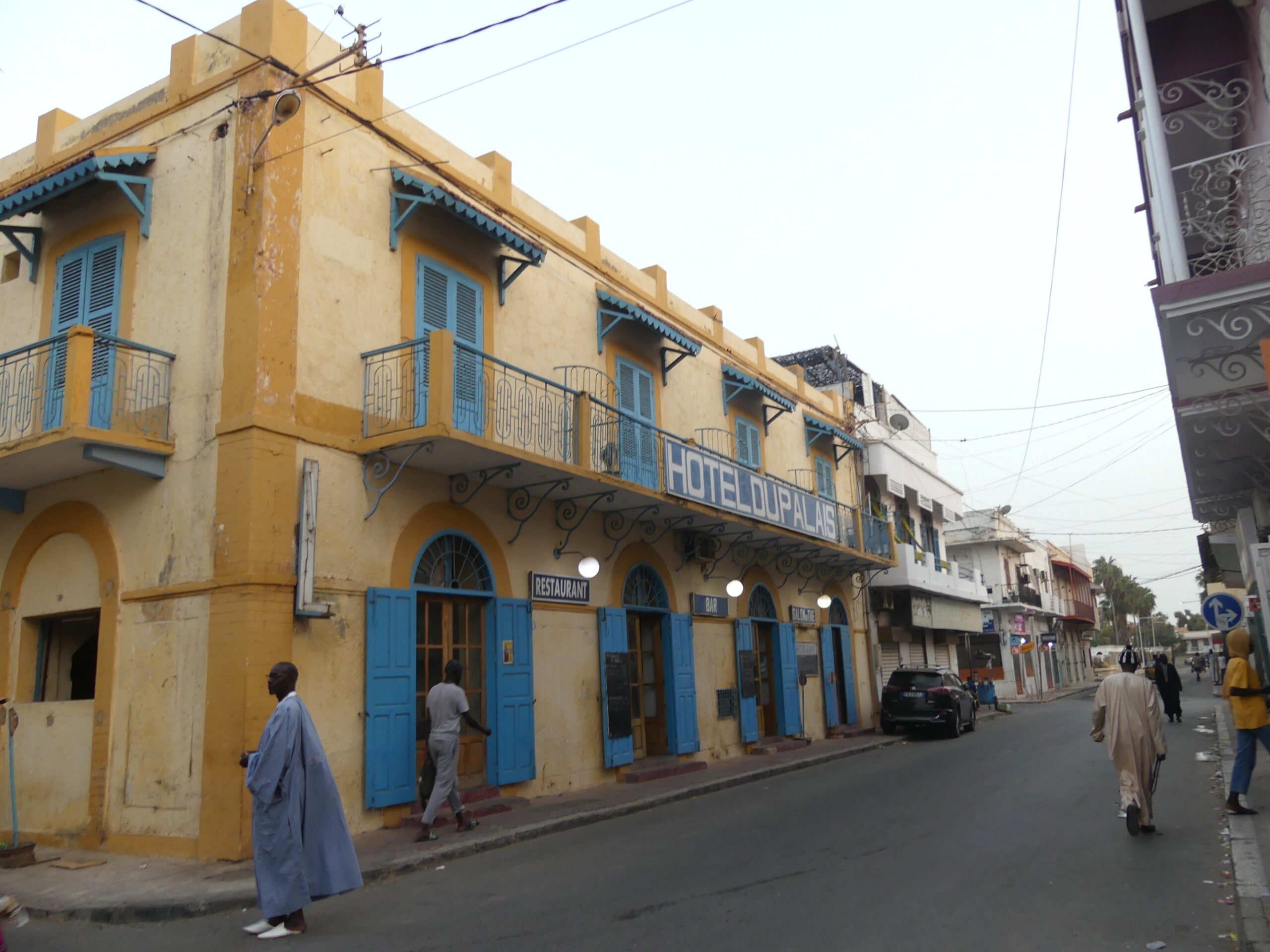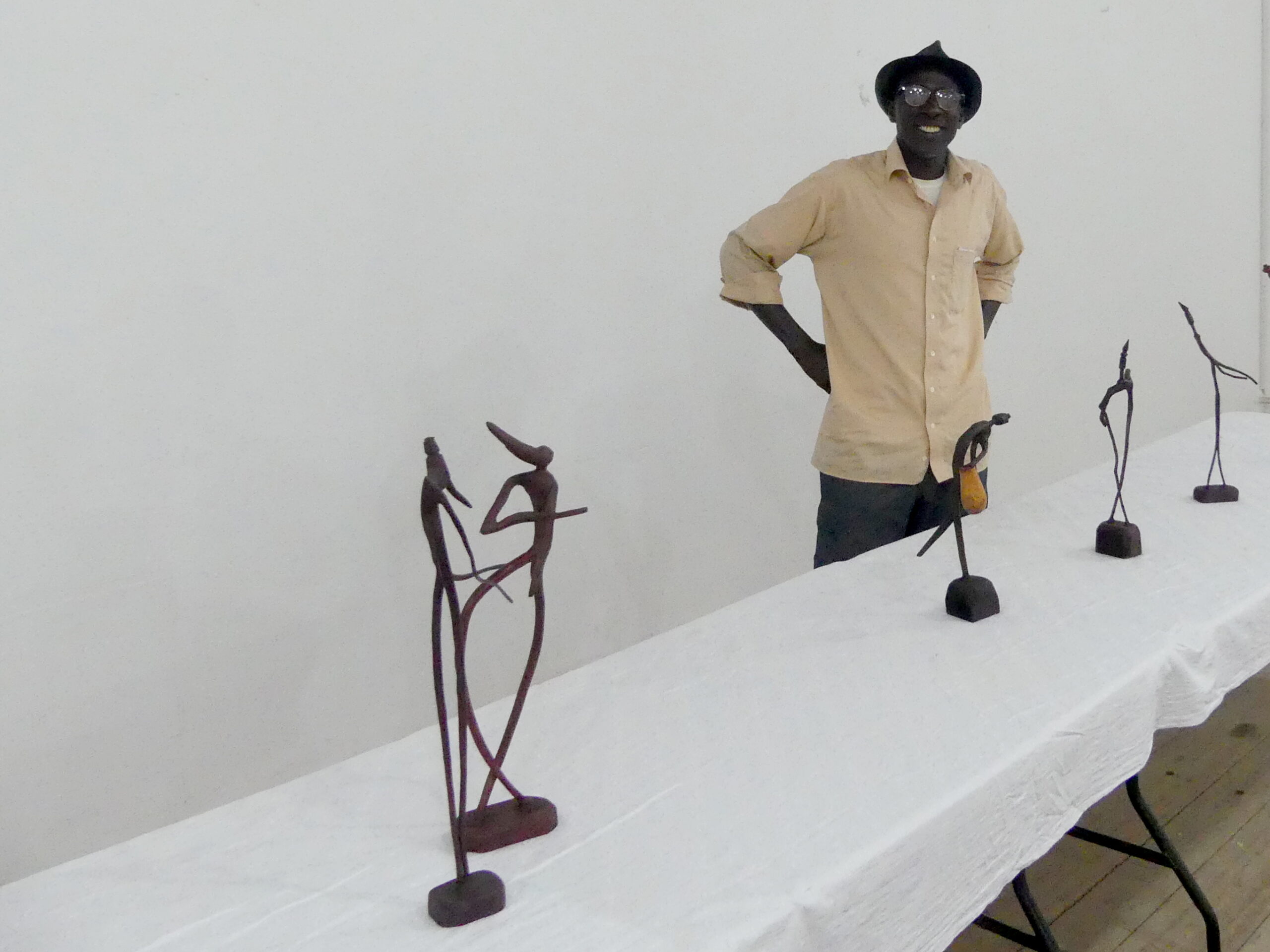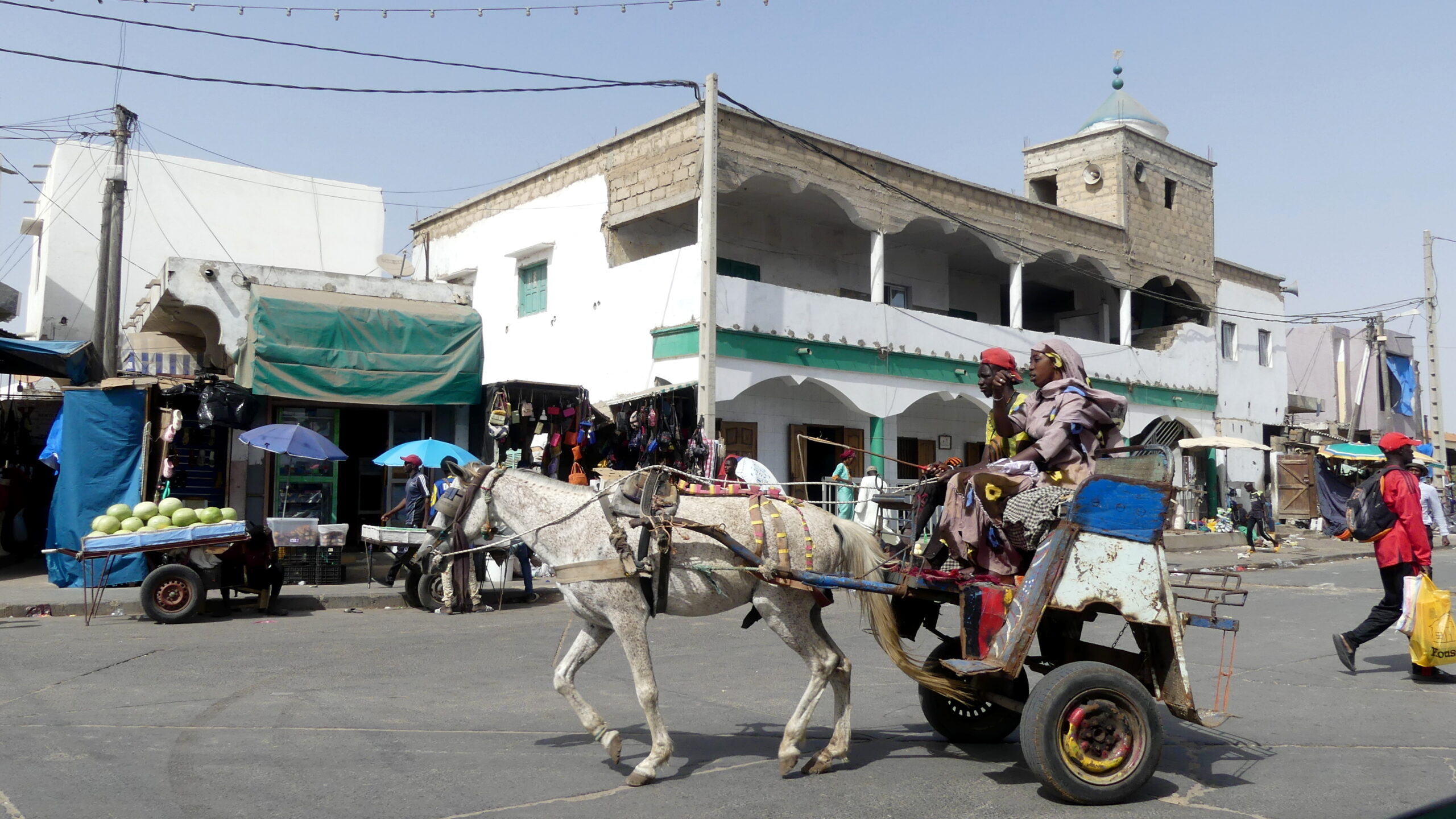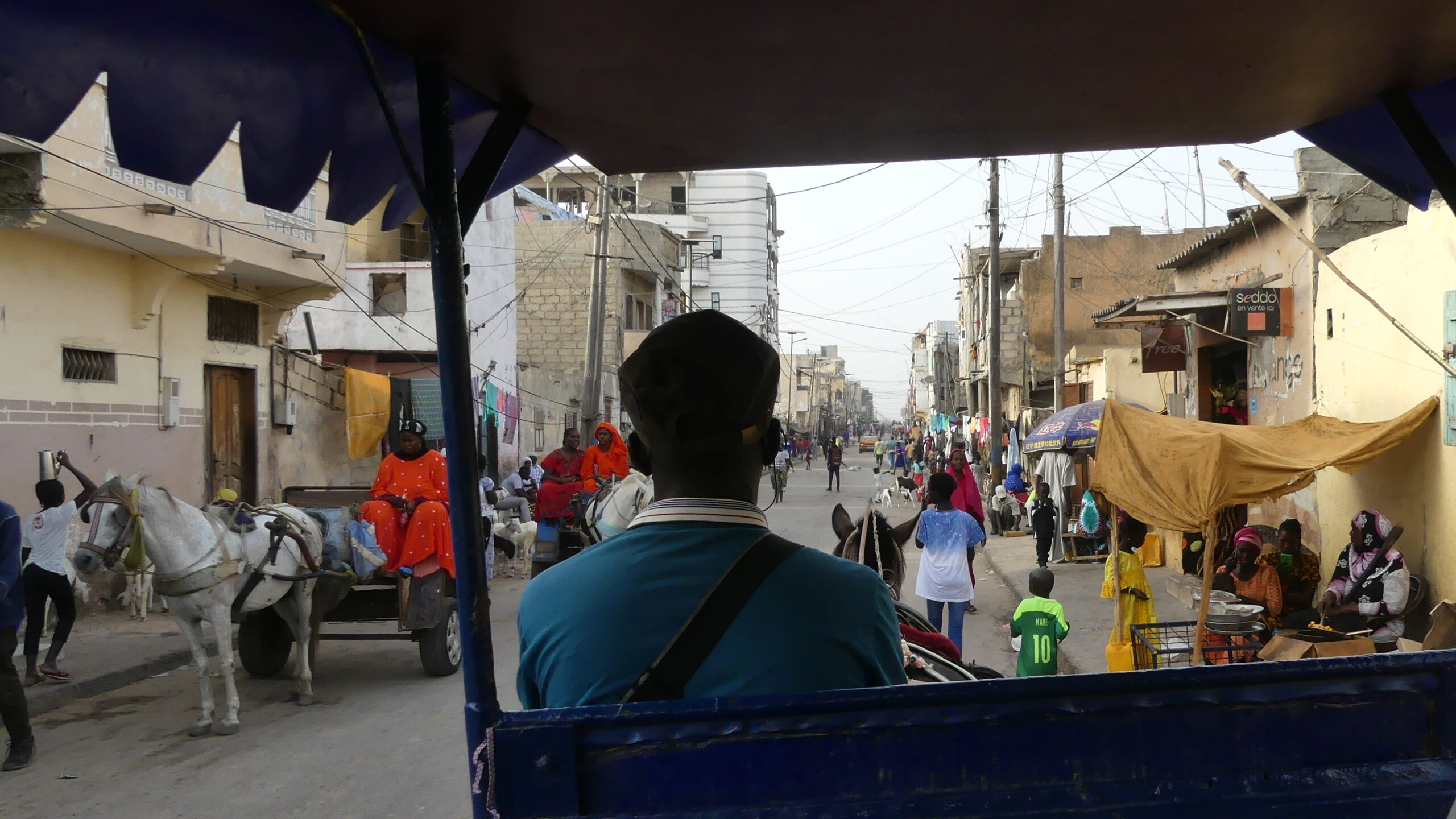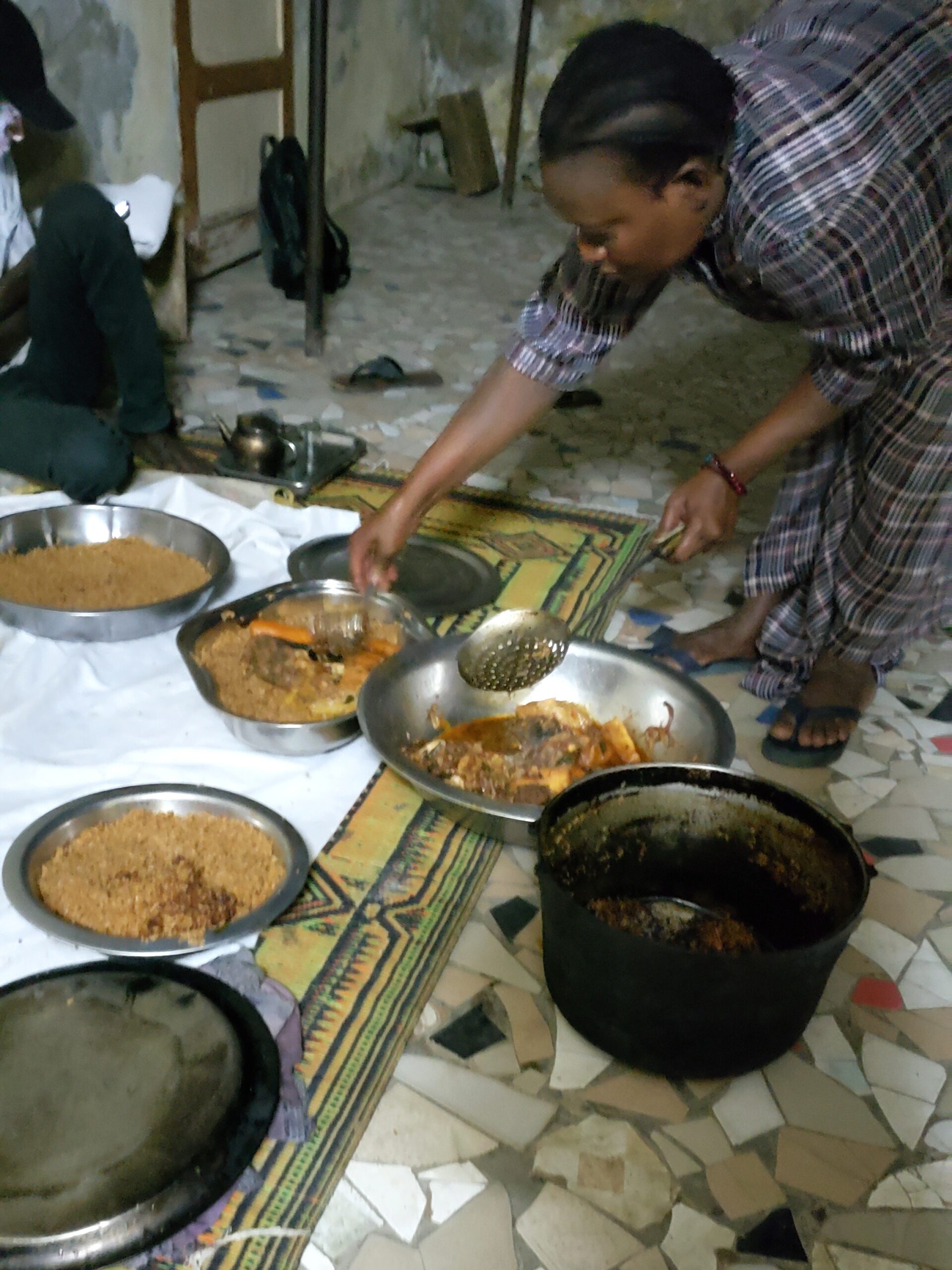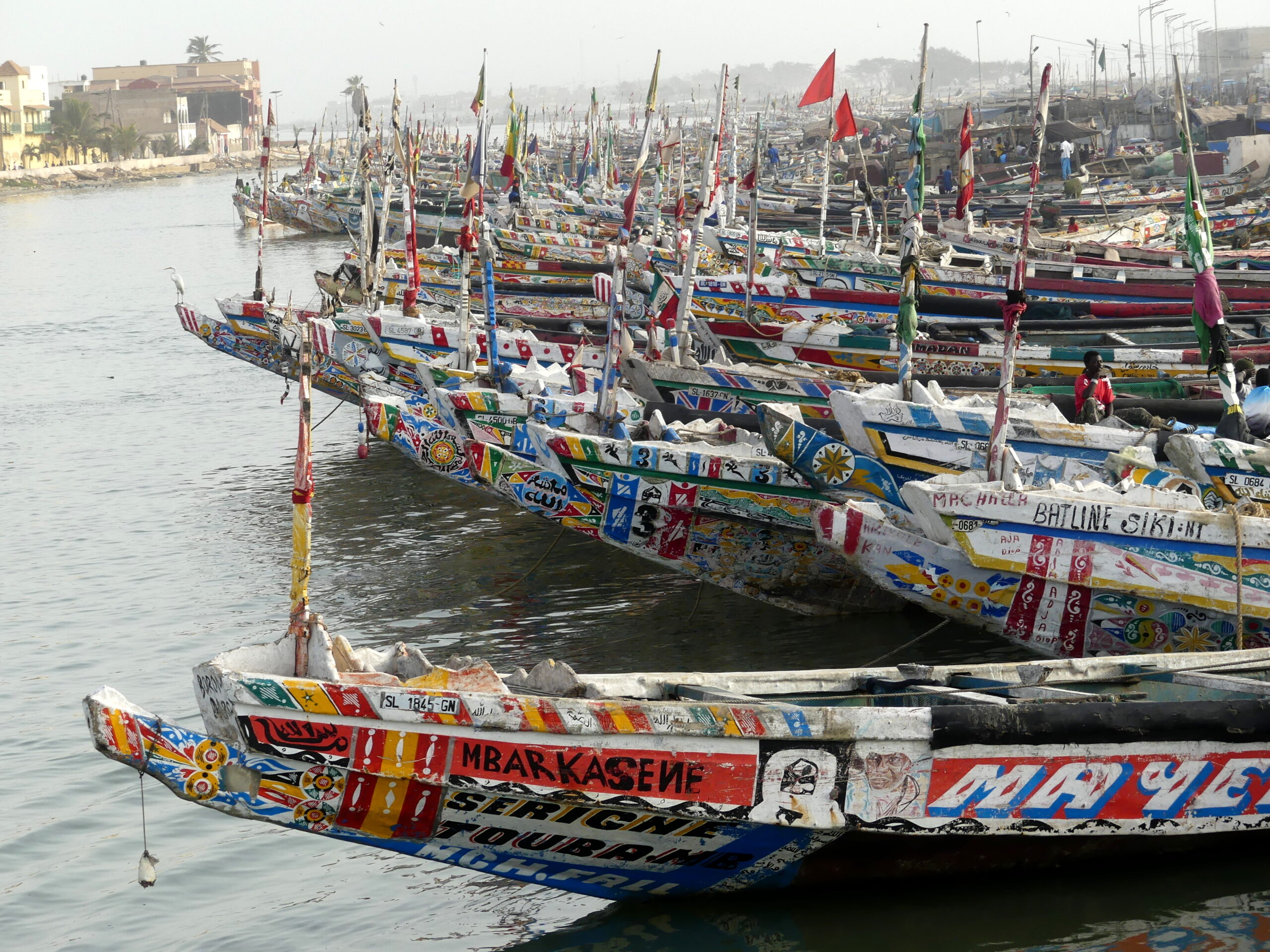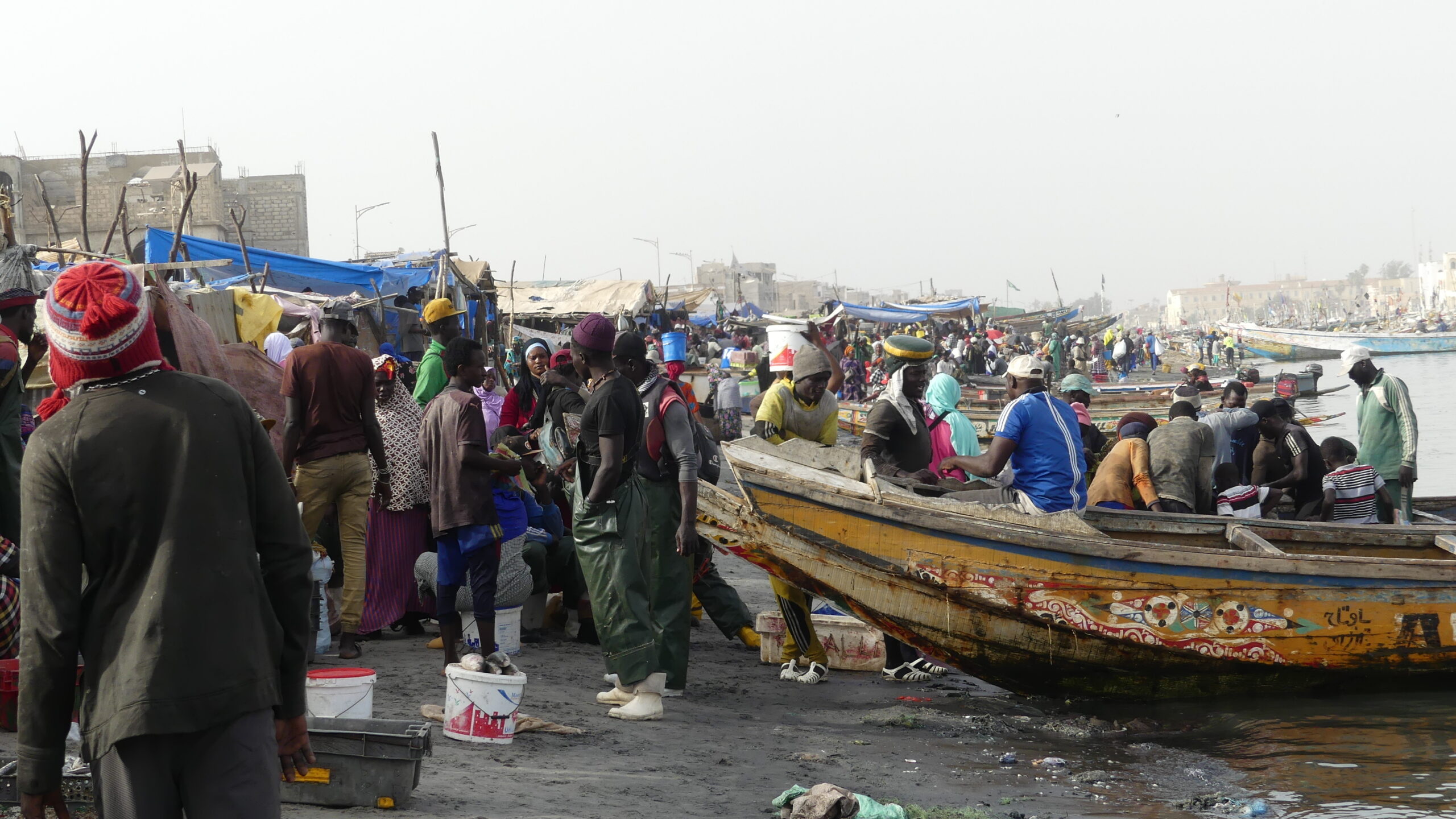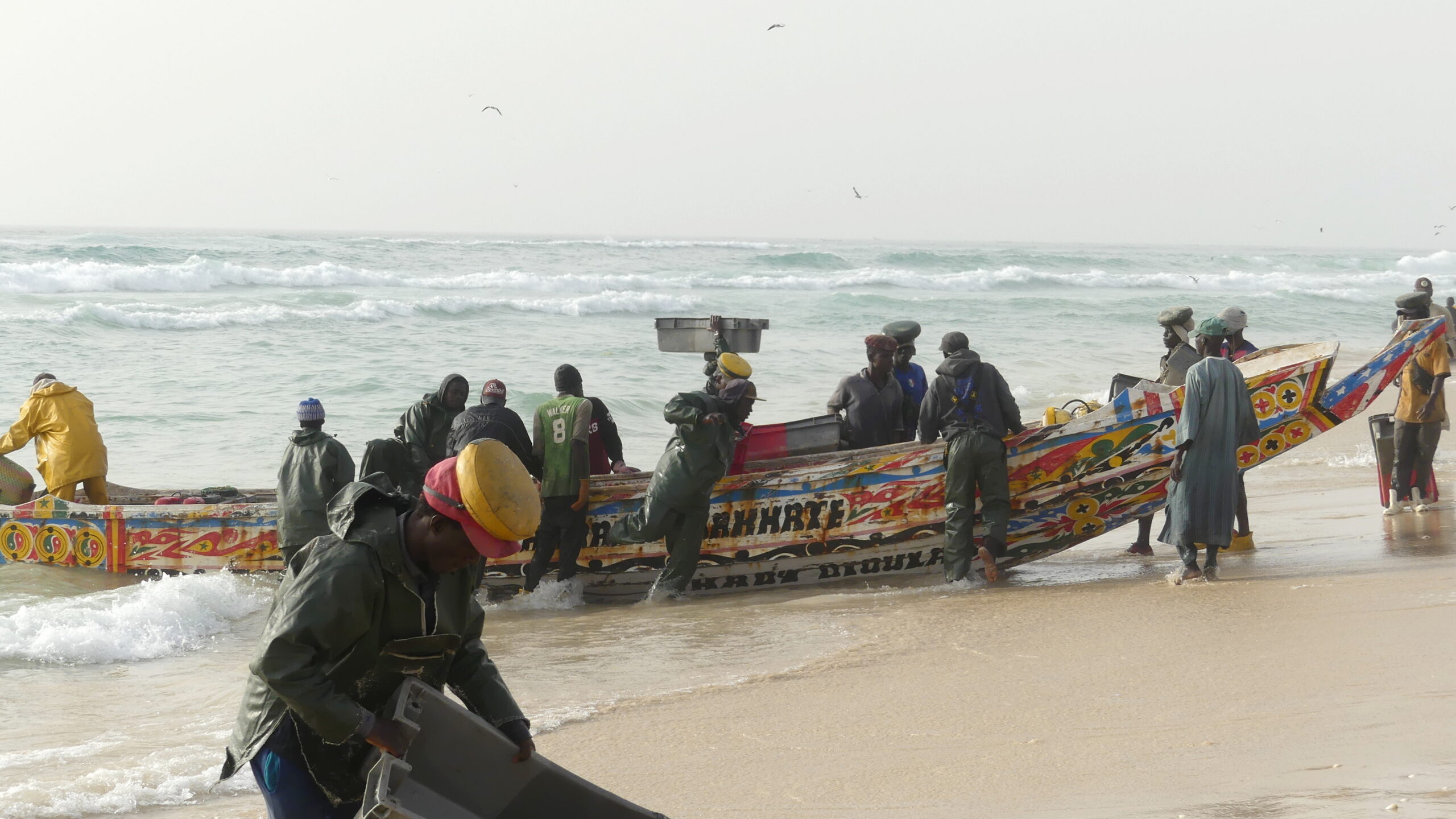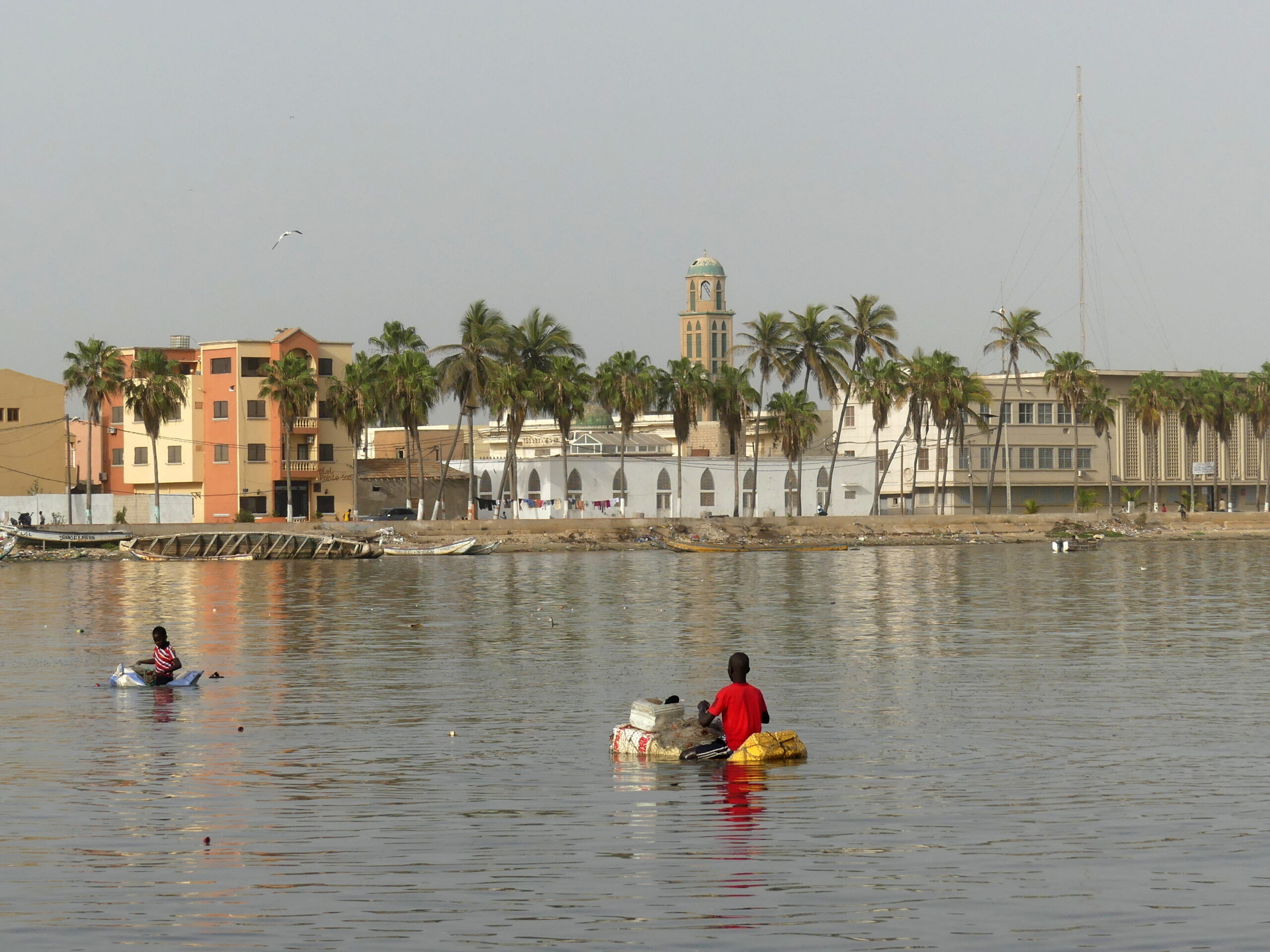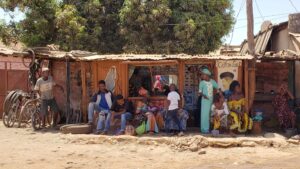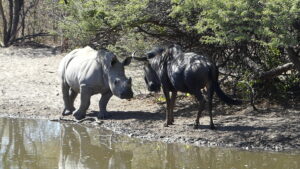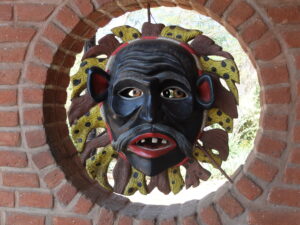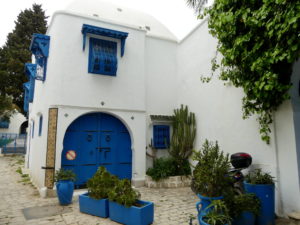Senegal had been under the control of the French since the early 19th century. For centuries earlier, they, the Portuguese, and others enslaved and exploited the region’s African tribes, themselves founders of several enduring empires in their own right.
Despite independence in 1960, the legacy of colonial rule is evident in language, politics, culture, and urban design. We found this legacy especially poignant at two UNESCO World Heritage sites: Gorée Island, from which slaves were transported to the west, and Saint-Louis, where the French long segregated the villagers in their administrative capital.
Gorée
How can we make sense of the small island of Gorée? For some three hundred years here, European slave traders persisted in human trafficking of barely imaginable barbarity and torment.
The island was a natural prison off the coast of Dakar, the westernmost point of Africa, surrounded by expanse of ocean and a ready harbor for slave boats. It was one of several gruesome gateways sending slaves to the Americas and Europe. Only a lucky few survived their common lot: death, torture, maiming, and separation.

Historians debate how large a role the island played, but numbers don’t change how we felt at the House of Slaves memorial here on this World Heritage Site. Yet again we confronted the horror that results from one group of humans treating another as lesser people. After slave trade ended, the French used the island as a fort, garrisoning troops in the round turret building at the left. Though they also transformed the island into a beautiful place, Gorée still reminds the world of its old inhumanity.
This former trade-slaving site is the main memorial and museum on Gorée Island. The traders lived upstairs and penned the slaves below in dank, crowded cells – like animals.
The passage between the stairs leads to the doorway through which people were herded onto the boats heading to the Americas and Europe, never to return. Today, however, that doorway welcomes the descendants of those who survived the ordeals of the trip and their enslaved labor.
Three images of slave-trading horrors. Two 18th century drawings (middle and right) of the slave trader house that is now a memorial. To the left, a scene from Alex Haley’s Roots with the imprisoned Kunta Kinte: those chains and metal collars are historically correct.
The “Door of No Return,” at the water’s edge of the slave traders’ house – with only the vast sea and the Americas beyond – has become a point of meditation, sadness, and remembrance for descendants of those who left in chains.
The packing method for Africans on the ironically named “Aurora,” or Dawn. For this was more truly the dawn of a tortuous voyage across the Atlantic, and a horrible death or barbaric life.
Rich slave traders built sturdy homes out of rock to boast of their profits from the human trafficking, often in the shape of boats, like this one.
Gorée is now a place where visitors can feel welcome, where local merchants and artists offer goods – as well as hospitality. This woman told Nancy that she should take care of her husband, or she would steal him away as her other husband. Perhaps she forgot his qualities, because later she did not even recognize Barry.
Below is just one of the lovely colonial era streets for the French after the slave trade ended.
Many African artists now work on the island, taking advantage of the many tourists who visit.
This man demonstrated his proficiency in sand painting after three years of training. By hand, he sifted onto his worktable various colors of sand from locations around Senegal. Then he applied a natural glue to a board to “print” an image. After drying in the sun, the result was a glossy and permanent finish with brilliant colors. Behind him are some examples of his work.
A monument to hope rises from the highest point of Gorée Island. It’s the prow of a slave trading ship sinking in the sea, symbolizing the end of those gruesome centuries of inhumanity. More generally, it expresses hope for the end of all such evils committed by one people against another. The holes of good make the ships of evil founder.
The renowned Senegalese artist Kalidou Kassé expresses a similar wish in this work we saw at Dakar. “Porte de l’Espoir” (Door of Hope) captures the grimness of the Door of No Return at the slave traders’ house with its orange, red, and black tones. But the artist also brightens the coloration while centering bright light in the doorway.
Saint-Louis
The UNESCO World Heritage city of Saint-Louis, the largest city of northwest Senegal and former capital of the country, is divided into two distinct districts by the Senegal River and the Atlantic Ocean. On the eastern island, the French built their colonial houses and administrative buildings. With the decline due to the shift of the capital and commercial activity to Dakar in 1958, this central city deteriorated. More recently revived by tourism, it remains a quiet, lightly populated place. To its east, on the mainland across the river, the modern city has expanded widely – an urban sprawl.
The other district to its west – a long, slim barrier island – is very different. There the French had segregated the fishing villagers. Yet that part of Saint-Louis still buzzes, as villagers pursue their traditional life. We were reminded of the liveliness of street life in late 19th century cities. The densely housed population fills the residential streets at the north, while the frenzied fish trade continues to the south. To us, the central city showed a faded charm, but the liveliness of the fishing island was fascinating.
A view of colonial Saint-Louis across the Senegal River. The 1897 iron bridge looked like an Eiffel creation, but was developed by another company.
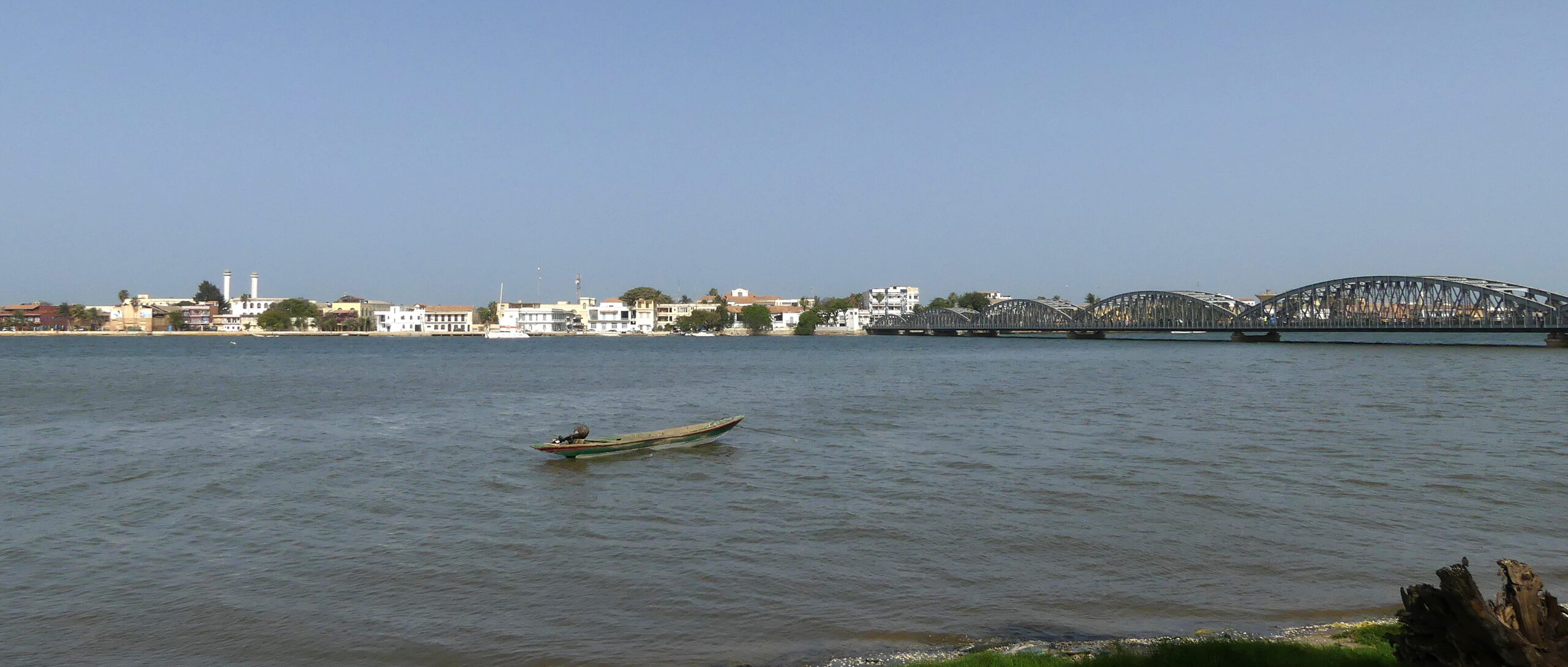
A street of typical colonial buildings here. The wrought iron balconies and two-story buildings – a style intended for a tropical climate – have reminded visitors of the French Quarter in New Orleans, Louisiana. These date from the mid-19th century, while those in New Orleans are late 18th century.
A restored and likely adapted house in the old colonial island of Saint-Louis.
Another street in old colonial Saint-Louis, with an eclectic hotel and typical 19th century colonial buildings.
This artist was presenting an exhibit he called Animals of the Future in a white-washed colonial structure that is used now as a cultural center. He had caught us in passing and asked us to return to view his art.
When we did, we found that not all his works were animals, but they all seemed to be dancing figures. One reimagined one showed an elephant with human legs as if it jiggled at a dance contest. In the foreground are a male-female couple entwined in their own dance, which – like the other figures on the table – were made of a pliable wood that could be roughly handled or dropped without damage.
A typical cart heads through the junction that divides the commercial fishing section from the residential section of the fishing village island.
In the lively residential section of the fishing village on the western island of Saint-Louis, horse carts generally transport people about. Though the French once forced native Senegalese onto this island, the villagers largely live here still, thronging the streets like the sidewalks of the lower east side of New York back a century.
We were graciously invited one evening to join a local family for the Iftar meal to break the Ramadan fast. They served the Senegalese national dish of spicy “broken rice” and fish, with bitter aubergine (a sea-going version of eggplant), tomato, and other vegetables. Here one of the women in the family puts the components of the dish together.
In Senegal, by tradition, only the women cook, never the men. As is usual, the preparation is on the ground where the cooking pots go.
Invented by a cook in Saint-Louis, this has become the Senegalese national dish: thieboudienne (chebu jen). It was delicious.
During the day, fishing boats dock at the quay. In their vivid decoration, the boats display traditional symbols and designs, as well as personal tributes by the owners to spiritual leaders or honored family members.
A fishing boat pulls onto the long, thronged village quay and is assailed by buyers bidding for the catch. As the background shows, similar scenes are repeated throughout the day in a continual hubbub.
The men fish; the women sell the fish. On the long quay of the river estuary, you experience an unending buzz of delivery, sorting, and selling. With another boat just pulled onto the quay with its catch in the background, this group of sociable friends tried to persuade us to buy – even though we told them we had no kitchen.
On the Atlantic side of the village island, sea-going boats also deliver the day’s catch to a throng of competing buyers, noticeable by their containers and those disc-topped hats that help them balance the containers on their heads. The fish is sold off the beach or salted and dried for preservation in the sun.
These boys practice the skills they will need as fishermen in the future, against the backdrop of southern end of the colonial island. As in other labor-intensive trades, the persistent tradition is to have many children to help with the work as they grow older and earn money when the parents can’t.
(To enlarge any picture above, click on it. Also, for more pictures from Senegal, CLICK HERE to view the slideshow at the end of the itinerary page.)


